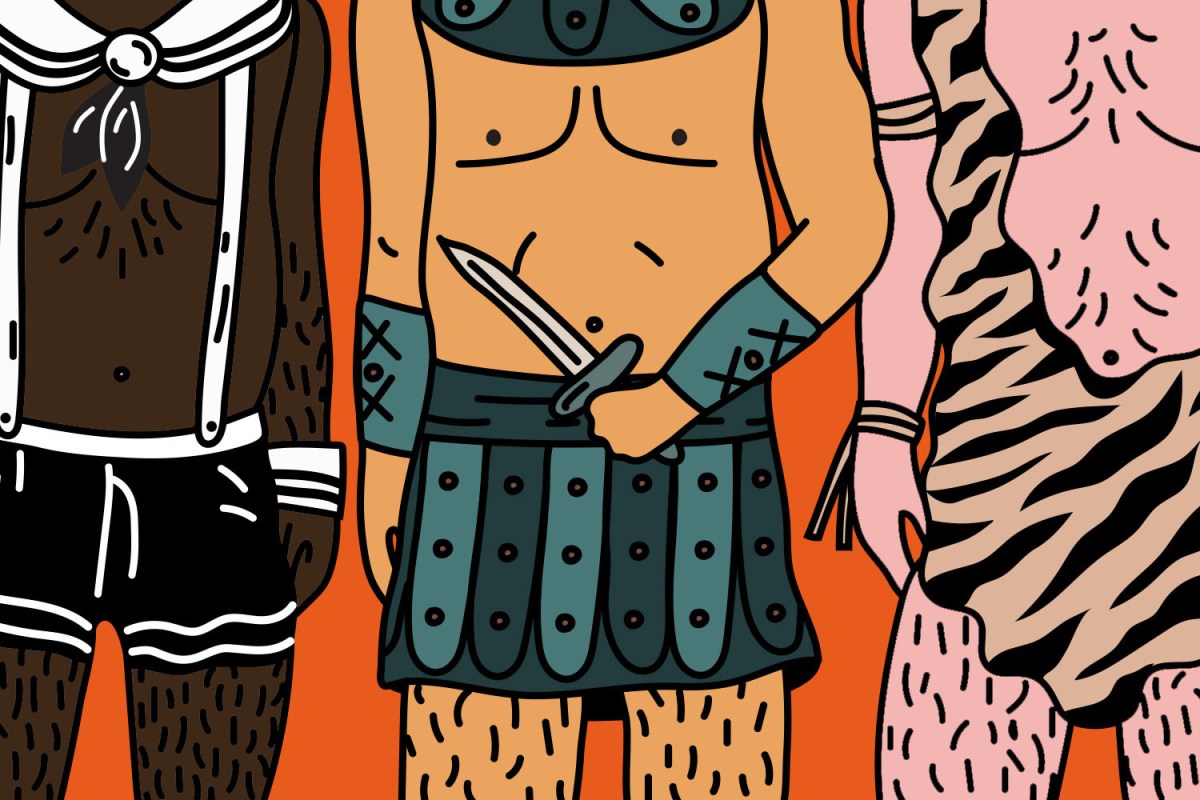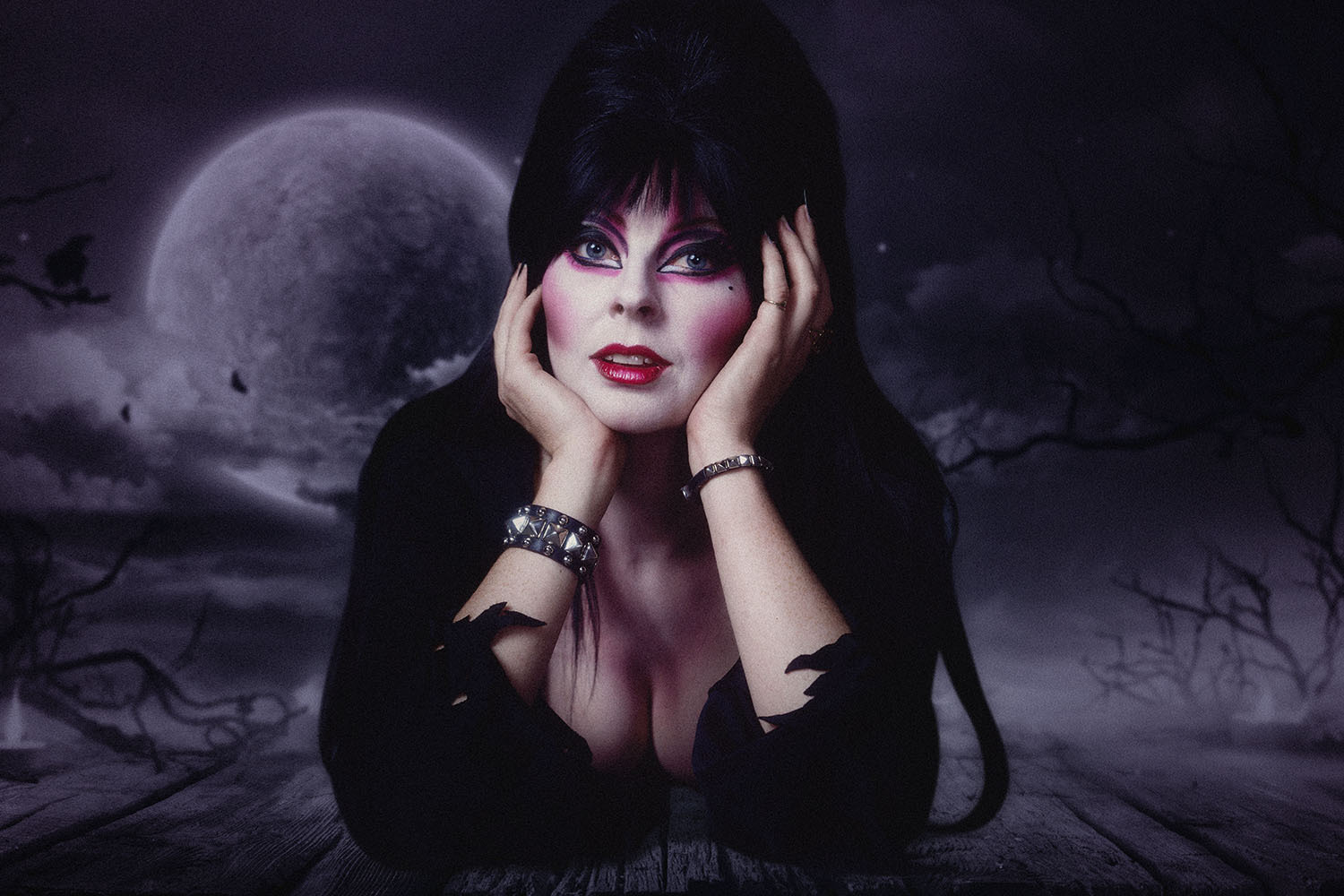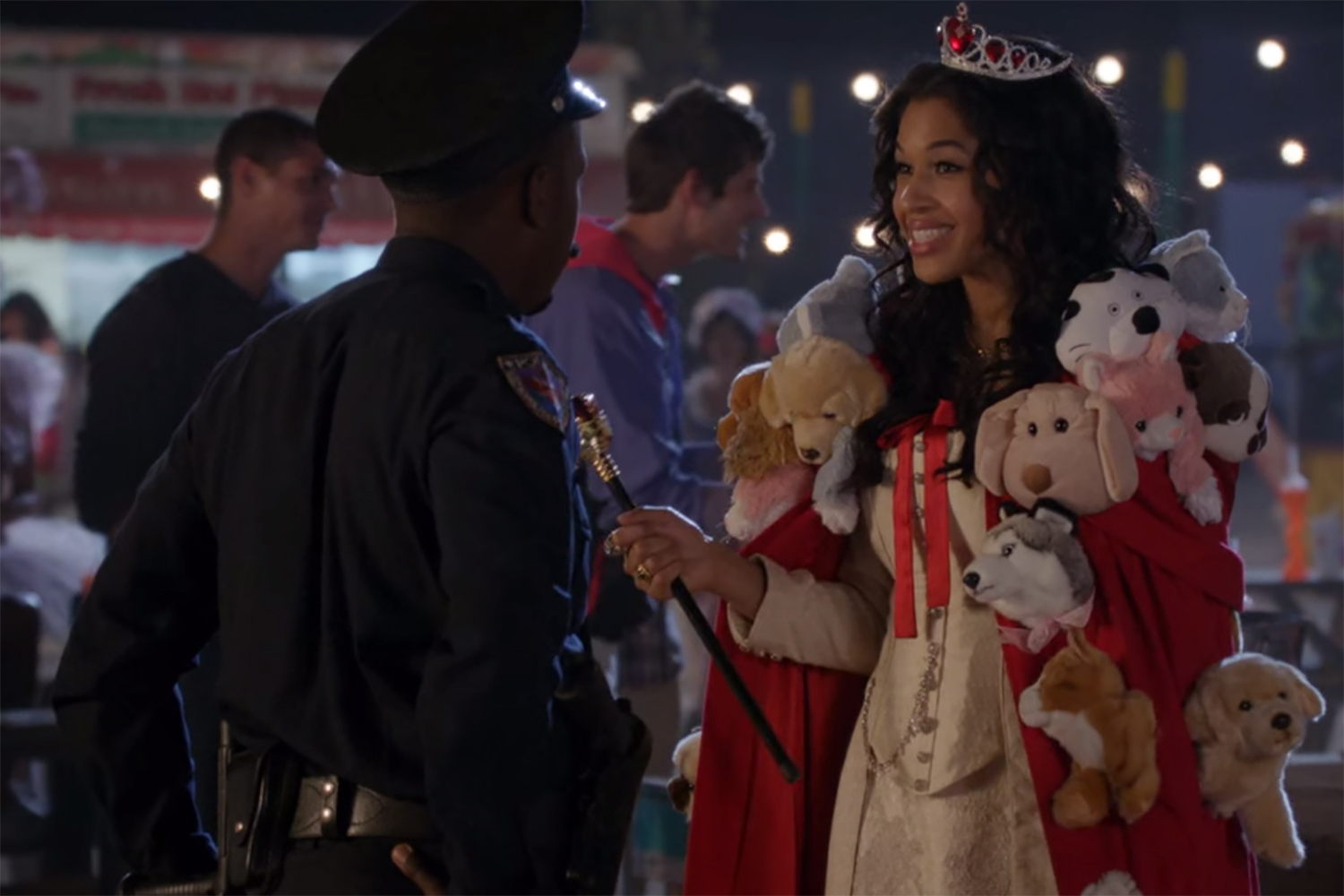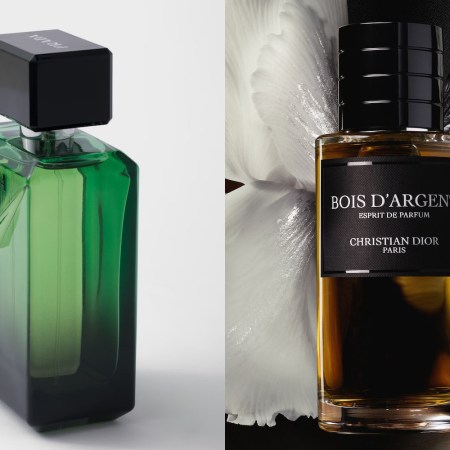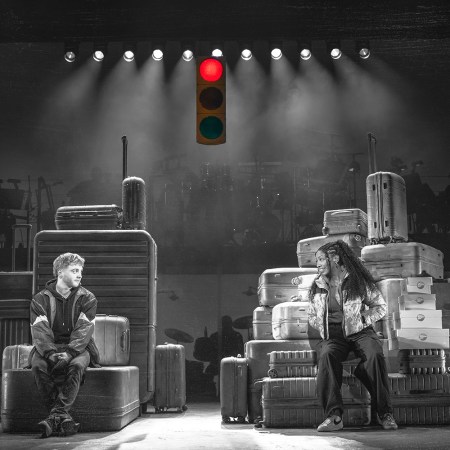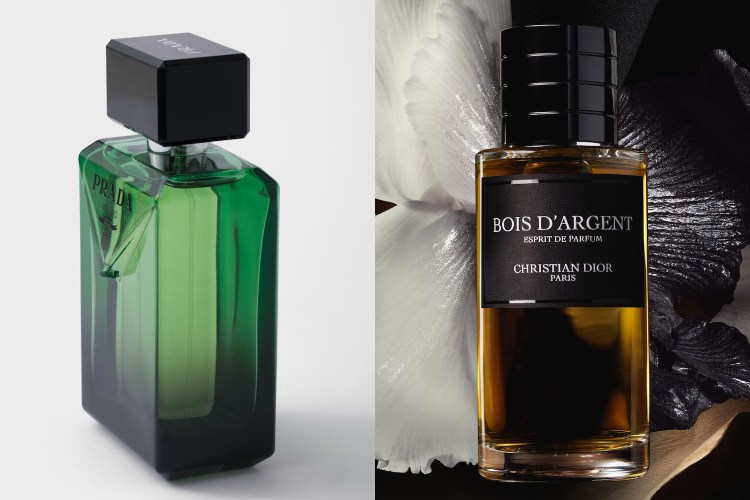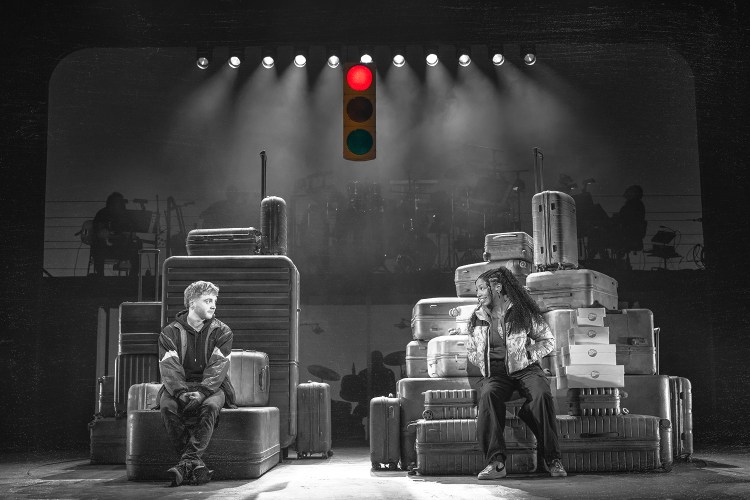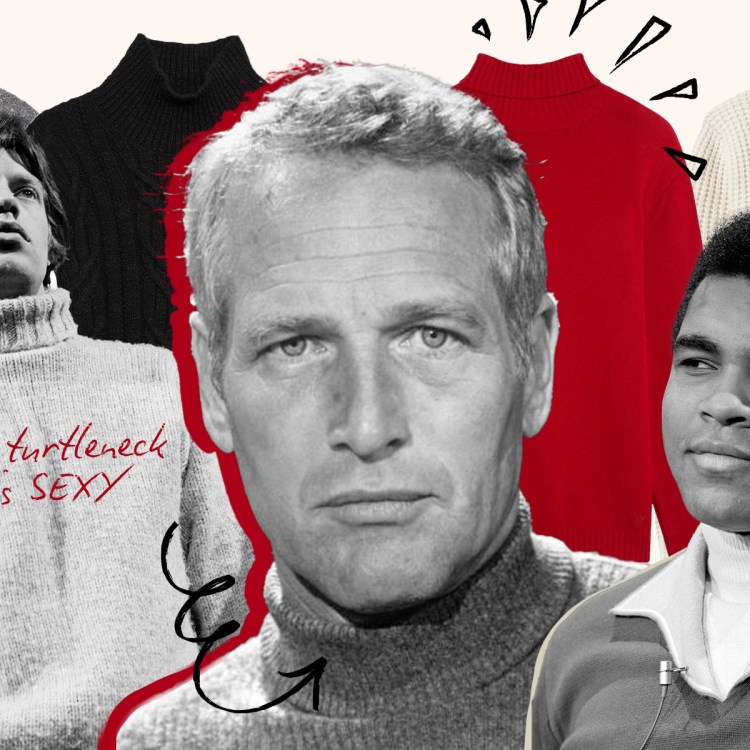Back in 2004, Mean Girls defined the modern Halloween costume discourse as we know it today in one of the film’s many oft-quoted lines: “Halloween is the one time of year a girl can dress like a total slut and no other girl can say anything about it.”
This, as Lindsay Lohan’s voiceover specifies, is one of the core tenets of “Girl World,” and whether or not one agrees with this claim — you could very easily argue that under almost no circumstance, come Halloween or high water, is a scantily clad woman ever immune to judgment from peers and strangers alike — conversations debating the appropriateness and implications of “sexy” Halloween costumes have long centered almost entirely on women. Largely absent from the annual Halloween discourse, however, is any mention of men’s Halloween costumes.
This could, of course, be attributed to the simple fact that society is generally less critical of men’s choices — sartorial, sexual and otherwise — and doesn’t feel the need to hyper-analyze a man’s every move and decision. That said, it’s also worth noting that there tend to be significantly fewer options for men when it comes to “sexy” Halloween costumes, perhaps reflecting largely unspoken gender norms that discourage men — particularly straight ones — from expressing their sexuality in ways that celebrate the male body.
“Something we’ve discussed for a couple of years now is the lack of really sexy men’s costumes,” says Pilar Quintana-Williams, Vice President of Merchandising at Yandy, an online retailer known for popularizing the 21st-century boom in skimpy, often ironically “sexy” Halloween costumes as we know them today. While the company currently lists nearly 1,500 products under its “Sexy Halloween Costume” category, the site only sells about 300 men’s costumes, and not all of them would be considered “sexy” according to the traditional barely-there, skin-tight definition of Halloween sexiness.
This is something that Yandy’s been looking to change in recent years. While company reps tell InsideHook the brand has sold men’s Halloween costumes since 2008, Yandy has recently “upped the ante,” designing an exclusive line of sexy costumes for men generally modeled after the brand’s infamous skin-first approach.
To be fair, Yandy isn’t the only company to offer skin-forward Halloween costumes to men, and the brand’s number-one selling men’s costume, the skin-baring King of Egypt ensemble, has long played to traditional conceptions of the skimpy-as-sexy Halloween costume, leaving plenty of room for men to showcase their abs and/or other aspects of their bodies.
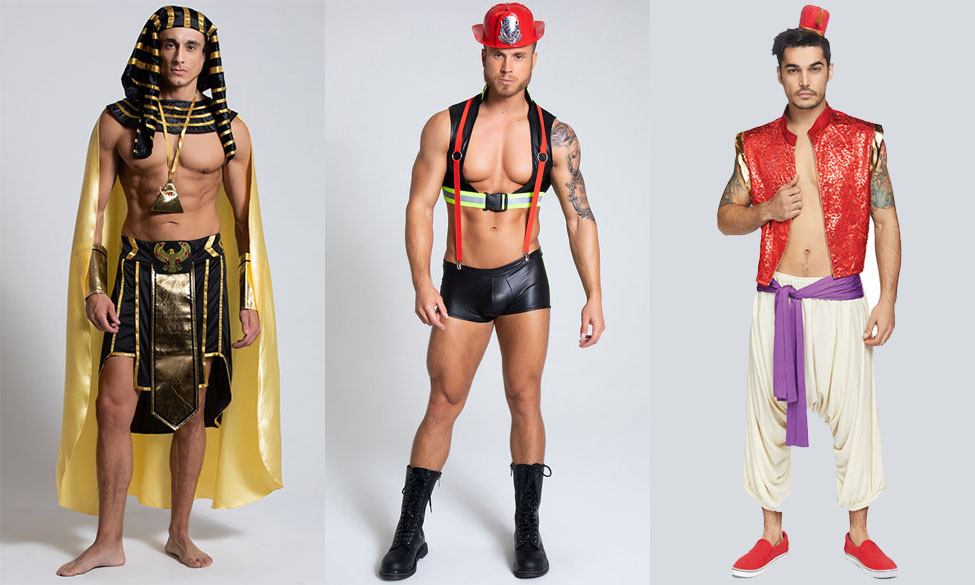
“There are surely more ‘sexy’ Halloween costumes available for women right now,” says Lesley Bannatyne, author and Halloween expert. However, she points to somewhat recent cultural fixtures and fascinations, from Magic Mike to Game of Thrones, suggesting that while underrepresented, “sexy” men’s costumes are far from extinct.
Still, this relative dearth of skin-baring Halloween costumes for men seems to reflect a broader societal understanding of sexiness, one that tends to code aesthetic sex appeal — particularly as defined by nudity — as inherently feminine. In a heteronormative, patriarchal society, we typically understand sexiness largely as a function of the male gaze: women are sexy, men are sexual aggressors.
“A skimpy costume, especially on Halloween, is worn with the purpose of the ‘male gaze’ in mind, if not literally, then conceptually,” says Shealyn Biron, an L.A.-based costume designer. This is not to say, as Biron stresses, that women necessarily wear provocative costumes with male attention in mind, but rather that our societal understanding of sexiness is deeply, if subconsciously, informed by gendered, heteronormative structures of sexuality. While these structures have most obviously led to the hypersexualization of women and the female body — a double-edged sword that simultaneously celebrates female sexuality while shaming women for expressing it — they also leave little room for men to express their sexuality outside of very rigid codes of traditional masculinity.
This is something we’ve seen play out in various aspects of masculine aesthetics, from the pronounced stigma against “dick pics” to the general sartorial choices most widely available to men. “Think about conventions for special occasions/evening: Women are encouraged to ‘show some skin,’” says Nancy Deihl, Chair of the Department of Art and Art Professions at New York University. “In contrast, men’s conventional formalwear is practically a uniform. It could be said that uniforms are sexy, but it’s not about body exposure for men the way it is for women.”
This, as Biron notes, seems to reflect a fundamental distinction between the way we conceive of the aesthetics of male and female sexuality. For men, sexiness is not inherently linked to nudity or revealing clothing. “Men’s perception of sexiness for themselves has not been mutated by a patriarchal and gender-conforming idea that showing more skin is inherently sexier,” says Biron.
“On Halloween and year-round, it is easier for men to be perceived as sexy,” she argues. “Women have fallen into the expectation that wearing a more revealing outfit is the formula for presenting as sexy.” Meanwhile, she adds, “a man in a nicely pressed T-shirt, a well-fitting pair of jeans and a pair of Chelsea boots will be perceived as sexy with much less effort than his female counterpart in her tiny dress, heels, complete lack of body hair, makeup, extensions, etc. I think the same logic applies to Halloween. Men may not wear skimpy costumes because they don’t have a societal pressure to do so to be perceived as sexy or attractive.”
However, while men may feel less pressure to bare their flesh to appease patriarchal constructs of aesthetic acceptability, they may also feel less able to bare their flesh at all. Ultimately, says Biron, “we perceive sexiness differently for men and women.”
“I do believe lots of men think they are dressing sexy at Halloween,” adds the costume designer, citing “barbarian” or James Bond costumes as examples popular men’s Halloween costumes which, while revealing little to no significant skin, are still generally interpreted as “sexy.”
Ultimately, it seems that as a demographic — again, one still deeply plagued by heteronormative concepts of gender and sexuality — straight men are largely discouraged from flaunting their bodies in the same way as women, perhaps because for them, sexiness tends to primarily exist as an object of the male gaze. This internalized understanding of skin-baring or figure-hugging clothing as fundamentally “feminine” or, at best, “flamboyant,” also seems to translate to a version of sexuality that, while accepted within the LGBTQ community, tends to alienate straight men.
“Straight men are often judged for ‘trying too hard’ when it comes to dressing,” says Yandy’s Director of Marketing, Alicia Thompson, echoing Deilhl, who adds that “there is overlap between straight males’ resistance to being ‘too’ conscious of their appearance and being ‘thought gay.’”
Indeed, the sexy Halloween costume may have actually been popular with gay men before it even gained a following among straight women.
“In the late 1960s, gay Halloween parades erupted in the Castro District of San Francisco; Greenwich Village parades followed soon after,” says Bannatyne. “Costumes were glamorous, gender-bending, sexual and fun, and the rest of the country took notice.The images of men dressed as sexy women gave credence to Halloween’s outrageousness and transgressiveness, something that had always been part of the holiday, and part of what brought adults back into celebrating Halloween.”
Decades later, this same spirit of transgression may be returning as rigid restrictions limiting the celebration and expression of the male body seem to finally be shifting. Earlier this year, Yandy launched a line of men’s lingerie, and this year the brand expanded its line of “sexy” Halloween costumes for men. “As we move into less binary ideas of gender, there may be more choices for all of us,” says Bannatyne.
“We’re absolutely encouraging all our customers to embrace their sexuality in ways that are healthy and positive,” says Yandy’s Thompson. “Taking a step back from societal norms and allowing yourself to experiment with something new is a cornerstone of our brand.”
“With each new generation, we are seeing these gendered constructs of fashion deteriorate as a new creative freedom emerges,” says Biron, and this applies to Halloween costumes and beyond. “There are straight men all over the internet participating in trends like wearing skirts to do daily tasks, modeling maid costumes because it makes them feel cute, or purchasing cat ears to explore an interest in classically feminine accessories that has never been accepted or encouraged in our society before now,” she adds. “Gen Z is tearing apart the constructs of femininity and masculinity and replacing it with free expression and shared interests.”
This article appeared in an InsideHook newsletter. Sign up for free to get more on travel, wellness, style, drinking, and culture.
